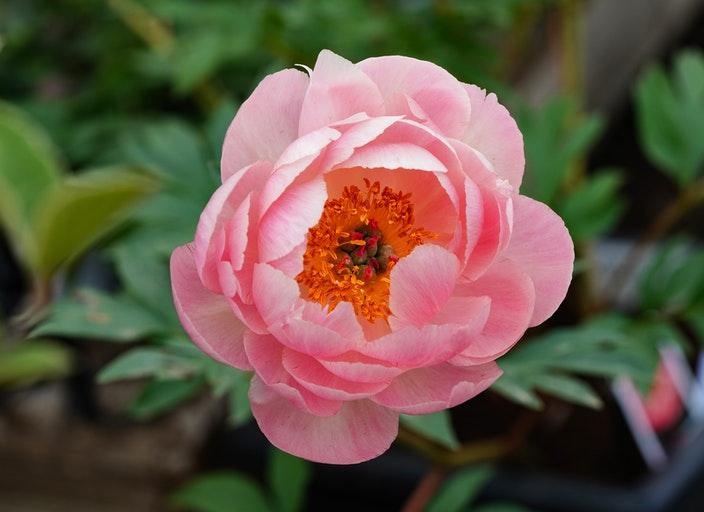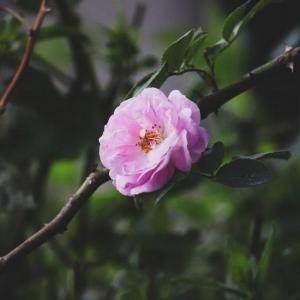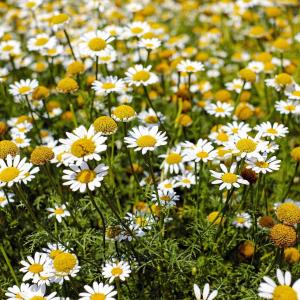

Few plants have a longer history of culture or play a more significant part in decorative gardening than peonies, and among the several species that make up the Paeonia genus, the Chinese peony (P. lactiflora), commonly known as the common garden peony, is undoubtedly the most well-known and significant. Large, full blossoms on these clump-forming perennial shrubs occur in late spring and early summer.
Peonies are often planted as mature nursery plants in pots in the spring, but bare-root plants, which are frequently purchased from internet merchants, are usually planted in the autumn. The Chinese peony is a slow-growing plant that may take up to three years to reach blooming maturity, but your perseverance will be rewarded with a plant that can live for a very long time. Peonies have a very long lifespan—they may live for up to 100 years.
Pets that consume the poisonous compound paeonol found in peonies may have digestive problems. The peony is not among the plants that are harmful to people.
Care for Chinese Peonies
Peonies are seldom utilized as garden plants south of USDA zone 7 because they need winters that are cold enough to cause plant dormancy. However, since several species can withstand temperatures as low as minus 50 degrees Fahrenheit, they are highly appreciated in most northern regions.
Peonies should be planted with 3 to 4 feet between plants to provide for adequate air circulation and wide spacing, since overcrowding stimulates the development of diseases. Avoid placing them near other huge plants that could compete with them for resources. Chinese peony should be planted such that the root crown is relatively near to the surface—no more than 2 inches deep—because they need a winter cold to develop bloom buds. Make careful not to bury the crown of a specimen that was cultivated in a nursery even deeper when planting it.
Peonies' huge, heavy bloom heads have a tendency to topple over, particularly after rain. Use wooden or light metal pegs and twine to create your own support if you don't want to spend the money on specific peony rings.
The only other routine care that peonies need is a thorough autumn cleansing and the removal of the leaf. Remove any unhealthy leaves throughout the growth season for a neater look and to stop the spread of illness.
Light
Garden peonies need full sun for at least six hours each day in order to bloom at their best. Only in warmer areas may you put them partially in the shade to shield them from the noon sun.
Soil
As long as the soil is healthy and well-drained, peonies may thrive in a wide range of soil types. Avoid standing water in rainy areas. Add organic materials but not manure if the soil is sandy or heavily clayed as this might promote the botrytis disease. Make careful to thoroughly incorporate amendments into the soil before applying them. Although they may tolerate slight acidity, peonies prefer a soil pH that is approximately neutral.
Chinese peony often don't need additional irrigation in areas with consistent rainfall. The spring and autumn are when they need the most water, so if those seasons are dry, be sure to water them gently and thoroughly as required to maintain the soil equally wet. The typical amount of water is 1 inch per week, obtained by a mix of irrigation and rainfall.
Thermodynamics and Humidity
Many types of peonies can withstand temperatures as low as minus 50 degrees Fahrenheit. Peonies are perennials for chilly locations. To fully induce the hibernation that resets the growing buds, they need winter cold. Zones 3 through 7 are ideal for Chinese peony, although zone 8's northern half may also sustain them.
Strong heat and humidity, particularly during the blooming time, are not good for Chinese peony. Picking kinds that bloom early, before the start of the summer heat, is one solution for areas with hot, muggy summers.
Fertilizer
Unless the soil is deficient in nutrients, Chinese peony often do not need fertilizer. Apply a low-nitrogen fertilizer, such as bulb fertilizer, along the dripline of the plants in poor soil or if they are not blooming enough after the bloom season.
However, it's best to wait to feed peony until there is clear indication that they require it, such as when plants fail to bloom despite ideal environmental circumstances.
Chinese peony varieties
There are many hundreds of varieties of Chinese peony, as well as P. lactflora x hybrids, which have been grown for decades. These are a few of the most well-known Chinese peony cultivars out of the many thousands there are:
The fragrant late-season blooming Paeonia lactiflora 'Sarah Bernardt' has double, rose-pink blooms.
P. lactiflora 'Karl Rosenfield' is a mid-season blooming with double blooms that is scarlet in color.
P. lactiflora 'Shirley Temple' has double, light-rose blooms that progressively become ivory and is a fragrant early bloomer.
P. lactiflora 'Bowl of Beauty' has solitary pink flowers with frilly off-white to yellow centers and blooms in the early part of the season.
P. lactiflora 'Kansas' has brilliant pink-red double blooms that bloom early to midseason.
P. lactiflora 'Festiva Maxima' is an early-season blooming with double white blooms that has a strong fragrance.
There are six different sorts of Chinese peony blooms to pick from, ranging from straightforward single-petal blossoms to very large and hefty double-flowered varieties. While semi-double, double, and bomb forms have more larger, heavier flowers that are sometimes prone to collapsing stems, particularly after a downpour, anemone, single, and Japanese types have comparatively open, lightweight blooms.
Additional Peony Varieties
There are many more significant groups of popular garden plants, other from Chinese peony, which include the several hundred varieties of P. lactiflora:
The term "tree peonies" refers to a small number of Paeonia species, particularly Paeonia suffruticosa, which are woody bushes with blooms that are larger than those of Chinese peonies but more open. The blooms are less likely to fall over since the plant stems are so strong. Zones 4 to 8 are suitable for tree peony. However, these plants are rather pricey.
Itoh peonies, also known as intersectional peonies, are a kind of hybrid peonies that were created by mating a species of tree peony (P. lemoinei) with a Chinese peony (P. lactiflora). They thus have tree peonies' enormous, spectacular blooms on bushes that more closely resemble Chinese peonies.
Finally, Paeonia tenuifolia and a few cultivars belong to a considerably smaller subgroup of peonies known as fern-leaved varieties. Unlike other varieties of peonies, these tiny plants feature dark crimson blooms and lovely fern-like leaves.
Pruning
Deadheading spent flowers is advised to maintain the plants looking lovely and to stop the spread of fungus infections. Trim the flower stems so that they end just above a sturdy leaf.
Cut the whole plant back to just above ground level in the autumn. To get rid of fungus spores that can re-infect the plant in the spring, remove and destroy the waste.
Growing Chinese Peonies
The best way to propagate peonies is to separate the clumps of rhizomatous roots by digging them up, although this may be a challenging process. This is how you do it:
The plant should be gently dug out after having its stalks pruned down to a few inches above ground level in the autumn.
The root ball may be divided into parts with three to five growth eyes at the top using a sharp knife.
Replant the fragments where you want them, being careful to bury the growth eyes no deeper than 2 inches. A plant that is planted too deeply won't receive the necessary winter cold, which might affect blooming.
Be patient; it might take a root division three years or more to grow into a blooming plant.
Developing Chinese Peonies From Seed
Peonies are almost always hybrid plants; they don't "come true" from seeds saved from flower heads. The development of seedlings into adult blooming plants might take several years, even if you get your seeds from a reliable commercial source. Since of this, amateurs seldom spread seeds because they believe vegetative methods of propagation to be more simpler.
Chinese peony repotting and potting
When grown in pots, Chinese peony often collapse over due to their height and top weight. Pick patio peonies or miniature hybrids if you wish to cultivate them in this manner.
Overwintering
Giving Chinese peony too much winter protection is a terrible idea since plants depend on a harsh winter frost to reset the blossoming buds. With the best of intentions, gardeners may be startled by plants that won't bloom the following year after they've been covered in mulch throughout the winter.
To avoid fungal spores overwintering and reinfecting plants the following spring, it is best to trim the plants to just above ground level and remove any debris from the area surrounding the peonies before the snow falls.
Typical Pests & Plant Illnesses
Botrytis blight and other fungal diseases are the most frequent ailments affecting Chinese peony, and they may be particularly bothersome in rainy, chilly spring weather. To stop the illness from spreading, remove any leaves or stems that are sick, discolored, or wilted as away. Cut the herbaceous stems to a few inches long and throw them in the trash in the autumn. A weekly application of a fungicide early in the growing season, if you discover that your peonies are prone to fungal disease, may stop illnesses from becoming worse.
A white coating known as mildew, which is a kind of fungus, may be seen on leaves and stems mostly during the hot, humid summer months. It just looks bad and has no negative effects on the plants. A thorough autumn clean-up here also aids in preventing the plants from contracting the infection the following year.
Although peonies may be vulnerable to thrips, scale, mealybugs, bulb mites, and beetles, all of which can be treated with neem oil or organic pesticides based on pyrethrin, peonies are often free of major pest issues. Because of the nectar in the blooms, the ants that often cover peony blossoms are completely harmless.
Methods for Making Chinese Peonies Bloom
Mature peonies often are fairly eager to bloom profusely if given ample light exposure. Don't be disheartened if a bare-root planting or split peony doesn't blossom in its first few years; young plants may take around three years to bloom.
If a peony is planted too deeply, its growth eyes may not experience enough winter cold and so may not bloom. To put the plant deeper, try digging up the ground a little bit first. Finally, a fall application of bulb fertilizer may shock the plant into producing better blooms the following spring if the soil is inadequate. However, be cautious not to overfeed as this may also prevent blooms from occurring.
A plant that has been overharvested for cut flowers may also react the following year by producing fewer blooms. Never take more than one-third of the flowers for cut arrangements in order to guarantee a decent yearly show.
Typical Chinese Peony Issues
With this mainly trouble-free plant, there are just a few widespread concerns.
Overturned flower stems
The horticulture industry's achievement in creating plants with enormous double-petaled blooms has been detrimental to peonies. Large flowers on several types sometimes topple over from their own weight, particularly after a rainstorm has saturated the petals. The solution: Use gridded plant supports that provide flower stems that emerge through the grid holes reinforcement. Alternately, grow plants with single or petal-like anemone flower variations.
Plant Becomes Mushy and Crumbles
This is the typical symptom of deadly fungal illnesses like botrytis. It's probably too late to rescue the plant by the time such symptoms appear; you'll need to pull it up and kill it. Early use of fungicides may help avert tragedy if you discover that peonies in your garden are vulnerable to these illnesses.
Ants Have Covered the Flowers.
Not to worry. This is totally natural since ants are attracted to the fragrant blooms and their tasty nectar. Before bringing cut flowers inside for floral arrangements, ants may be simply swept away since they do not harm the blooms.
文章
sososo赞了

共2条评论


YoshioHDA
2024年10月09日
0
+54 9 3758 61-3319

sososo
2022年07月18日
0
I really want to go to China😍









